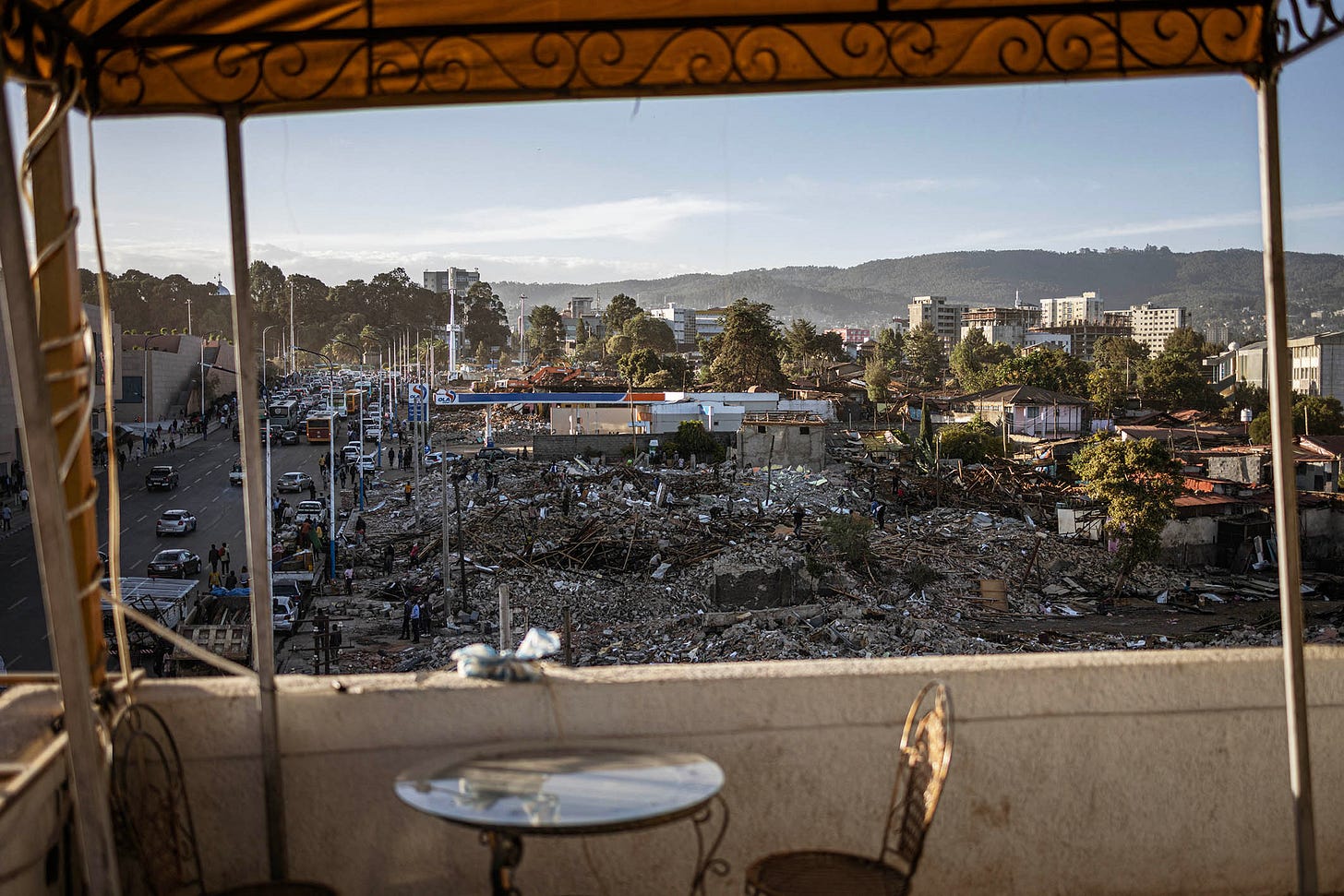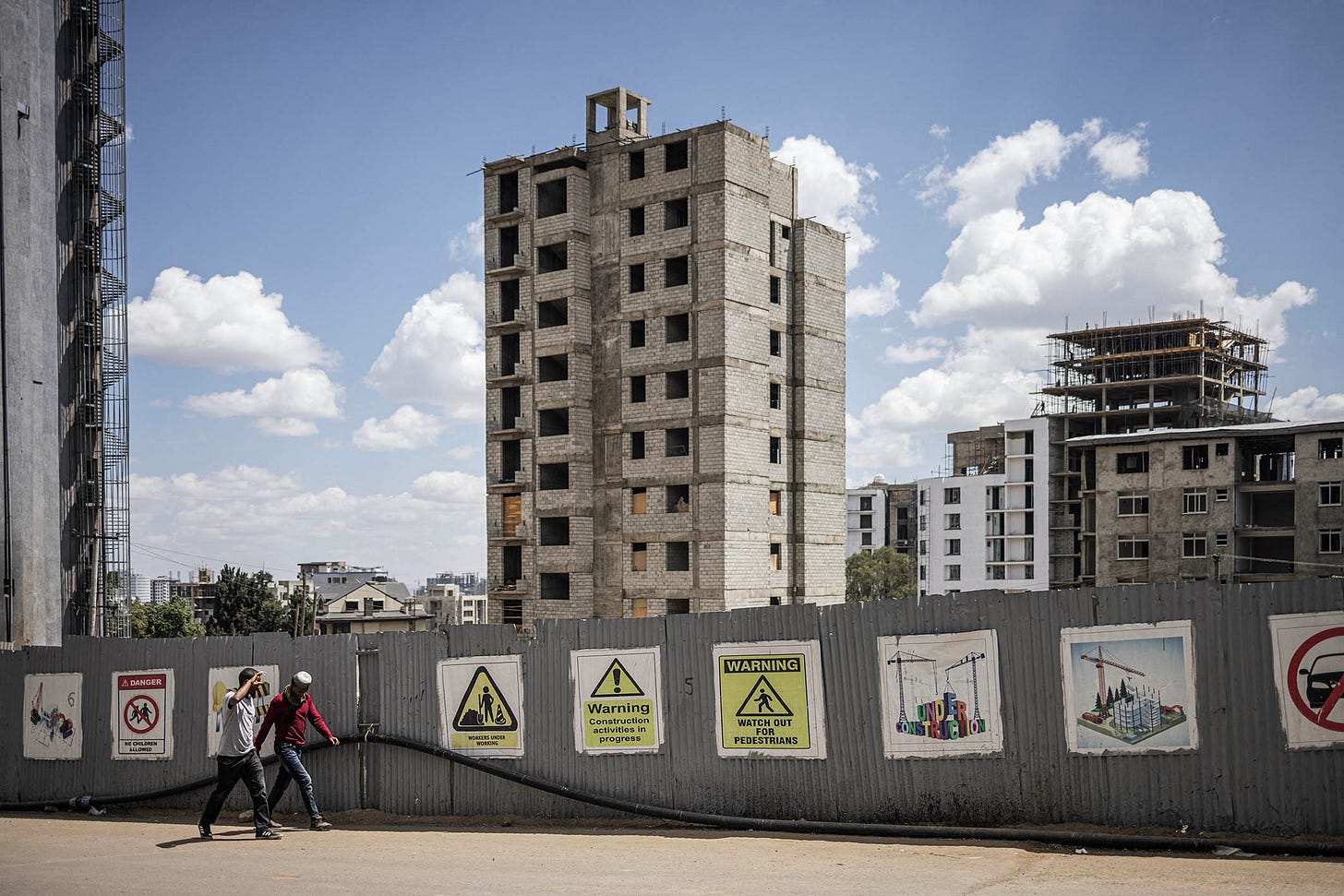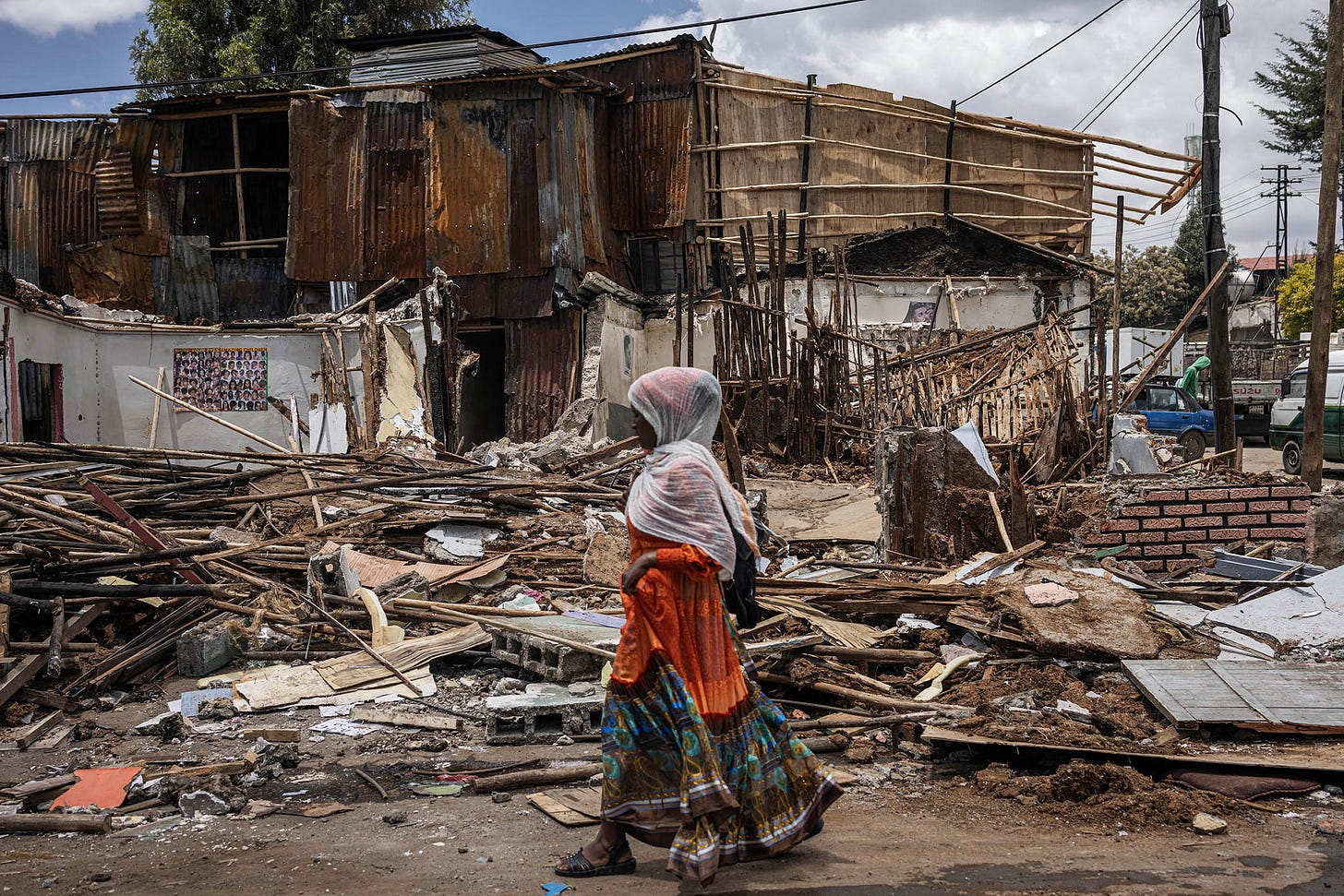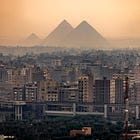The complex history of Addis Ababa’s Piassa is being erased
City planners want to make it shiny, modern and tourist-friendly.
Maya Misikir in Addis Ababa

Bulldozers have knocked down much of the Piassa area of Addis Ababa, erasing centuries of history that Ethiopians built there, starting with Menelik II in the late 1800s. It is now nearly unrecognisable.
This was, for decades, the beating, bustling heart of the capital city. Its streets were lined with artisans and tradesmen, and crowded with people haggling over gold and silver, while sampling macchiatos from its old Italian era cafes. Many of Piassa’s buildings were classic examples of the modernist architecture that was, until recently, Addis Ababa’s signature style. Then came the bulldozers.

Gates and fences have been torn down, and old buildings have been turned to dust. Blue corrugated iron sheeting disguises the wreckage as excavators load the rubble onto red lorries, which dump it – along with great chunks of the city’s history – in far away rubbish tips.
The Addis Ababa Corridor Development project calls for wider streets, cycle lanes and modern buildings. Piassa’s narrow cobbled streets and historic buildings must give way to Prime Minister Abiy Ahmed’s ambition to make the capital an East African Dubai.

Abiy intends to transform the capital into a smart, modern city that can deliver a reasonable quality of life for its estimated 5.7-million residents.
“The plan has in mind accommodations for a growing metropolis, including projects for the construction of bicycle routes, spacious pedestrian walkways, better roads, parks, libraries, and additional housing. To improve the quality of life in the city, the project aims to upgrade the outdated drainage systems, upgrade utility networks such as power and internet,” reported Abren, a diaspora group.
But for some in Piassa the changes have come too fast, and without adequate warning. Some home and business owners have been evicted from their premises, sometimes with just a few days’ notice. Others have been told to modernise their own buildings, at enormous cost.

Renters in one Piassa building were told last month to replace their old, shuttered windows with tinted glass and aluminium frames, at a cost of about $750 per window. There are as many as 20 windows in some apartment blocks, where the average rent is less than $120 per month. After residents protested, the order was suspended.
One of the area’s most iconic buildings, Hager Fikir – the first theatre in Addis – has been spared. But its historic front gate and an outbuilding, used as a torture chamber by the Italian occupiers, have been razed. “We pushed back, asking for formal letters communicating the decision,” said theatre director Abdulkarim Jemal. “It bought us a few days. But they demolished it anyway.”
In response to residents’ concerns, the Ethiopian Heritage Authority said that buildings in Piassa do not automatically qualify for protection due to their age.





